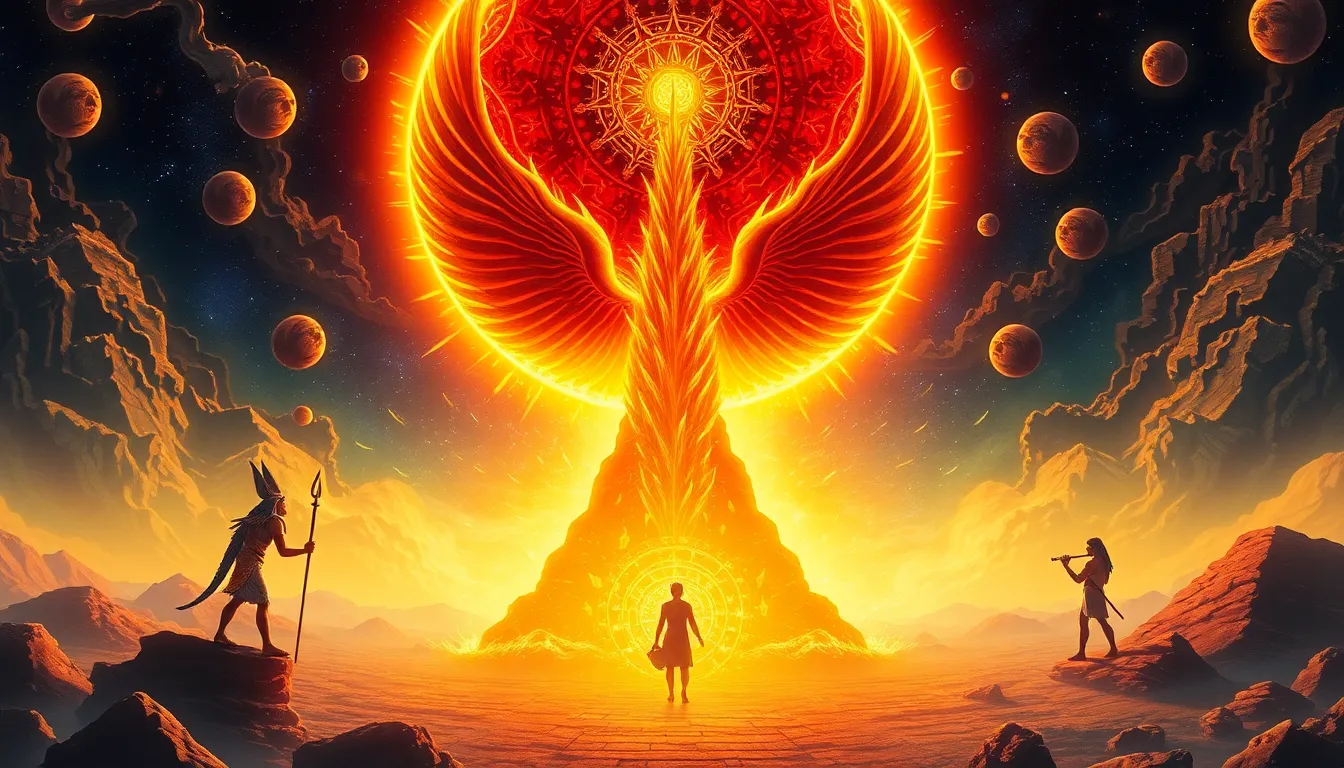The Cosmic Cycle: Egyptian Myths of Creation and Destruction
I. Introduction to Egyptian Mythology
Egyptian mythology is a rich tapestry of beliefs and stories that played a crucial role in the lives of the ancient Egyptians. It provided a framework for understanding the universe, human existence, and the intricate relationship between the divine and the mortal.
Myths were not merely tales but served as vital elements in the culture, guiding rituals, influencing governance, and helping to explain natural phenomena. They were essential for comprehending the cosmos and humanity’s place within it.
II. The Concept of the Cosmic Cycle
The cosmic cycle in Egyptian mythology refers to the perpetual rhythm of creation, destruction, and rebirth that governs the universe. This concept emphasizes that creation and destruction are not opposing forces but rather interconnected aspects of existence.
In Egyptian thought, the cosmic cycle is significant as it reflects the ongoing processes of life and death, order and chaos. The cyclical nature of these events underscores the belief that everything is part of a larger, unending journey.
III. Creation Myths of Ancient Egypt
The stories of creation in ancient Egypt often begin with the primordial waters known as Nun. This formless chaos was the source of all creation, representing the potential for life and the universe.
- Nun: The primordial waters from which all life emerges.
- Atum: One of the first gods, who created himself from Nun and brought forth creation through his thoughts and words.
- Ra: The sun god, who emerged from Atum and became a central figure in creation myths.
- Ptah: The god of craftsmen and architects, who created the world through the power of speech.
The establishment of order, known as Ma’at, was a fundamental aspect of creation. Ma’at represented truth, balance, and harmony in the universe, contrasting with the chaos of Nun.
IV. The Role of Deities in the Cosmic Cycle
In Egyptian mythology, various deities played crucial roles in both creation and destruction. Each god had specific functions and attributes that contributed to the maintenance of the cosmic balance.
- Osiris: The god of the afterlife, resurrection, and agriculture, representing the cycle of life and death.
- Isis: The goddess of magic and motherhood, who helped to restore and protect life.
- Set: The god of chaos and desert, often associated with destruction and disorder.
The interplay between these gods illustrates the dynamic balance between chaos and order. The cyclical nature of their interactions reflects the ongoing cosmic cycle, where creation and destruction coexist and influence one another.
V. Myths of Destruction and Chaos
Chaos, referred to as Isfet in Egyptian mythology, is a fundamental concept that represents disorder and disruption in the cosmic balance. It is often depicted as a threatening force that must be contained to maintain harmony.
Myths surrounding destruction frequently involve Set, who embodies chaos and challenges the established order. His conflicts with Osiris and Horus illustrate the struggle between order and chaos, life and death.
The cyclical nature of destruction and rebirth is a recurring theme in Egyptian thought. The belief that the world could be destroyed only to be reborn again reinforces the idea that endings are often beginnings in disguise.
VI. The Afterlife and the Continuation of the Cosmic Cycle
The journey of the soul after death is a vital aspect of Egyptian mythology, representing the ultimate continuation of the cosmic cycle. The soul’s passage through the afterlife is fraught with trials, but it ultimately leads to rebirth and resurrection.
The Book of the Dead serves as a guide for the deceased, outlining the necessary steps to navigate the afterlife and achieve eternal life. This text reflects the intertwined nature of creation and destruction, as it emphasizes the importance of maintaining Ma’at even in death.
The concept of resurrection is deeply tied to these beliefs, exemplified in the myth of Osiris, who was resurrected after being killed by Set. This myth illustrates the idea that death is not the end but rather a transformation that leads to new life.
VII. Influence of Egyptian Myths on Later Cultures
The creation myths of ancient Egypt have significantly influenced later cultures, particularly Greco-Roman thought. Many elements of Egyptian mythology found their way into the narratives and philosophies of these civilizations.
- Greek philosophers were inspired by Egyptian concepts of the cosmos and the afterlife.
- Roman literature often incorporated Egyptian deities, blending them into their own mythologies.
Moreover, comparisons with other ancient civilizations reveal similarities in creation and destruction myths, highlighting a shared human experience in grappling with life’s mysteries. The enduring legacy of Egyptian mythology continues to resonate in modern interpretations of life, death, and the universe.
VIII. Conclusion
The cosmic cycle in Egyptian mythology encapsulates the profound interconnectedness of creation and destruction. It offers a framework for understanding not only the ancient Egyptians’ beliefs about the universe but also their views on life, death, and the afterlife.
These myths remain relevant today, prompting reflections on the cyclical nature of existence and the balance between order and chaos. Ultimately, Egyptian mythology invites contemporary audiences to explore the complexities of life and the enduring journey of the soul through the cosmic narrative.




